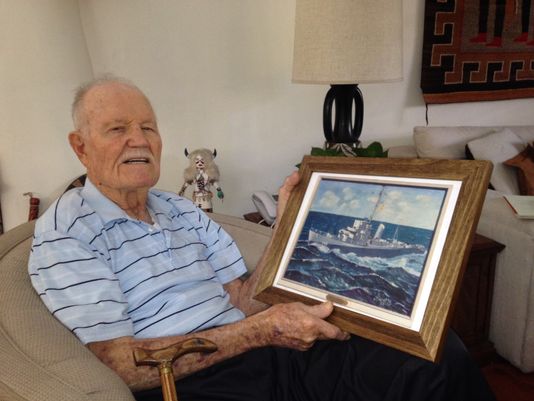Bob Lofgren was one man on a team of German submarine hunters during the Second World War, though nowadays he leads a quiet life at home. His most recent reminder of his service in the Navy was a reunion between he and the men he worked with seventy years ago. Their job during the Second World War was essentially to locate any active German submarine they could find and either capture or destroy it.
Lofgren was new to the sea when he joined the Navy as a twenty-year-old. He spent his time in the service aboard the USS Chatelain with several other men who were new to the naval lifestyle. Lofgren’s training revolved around sonar, which was integral to German submarine hunting. The primary engagement of the USS Chatelain became the Battle of the Atlantic, during which the hunting of enemy U-boats came to a head as Allied code breakers discovered approximate routes for the Axis ships.
Two days before June 6th, 1944, the day that would become known as D-Day, Lofgren and his crew were engaged in battle near Africa. The task force involved in the hunting operation fought with and boarded a German submarine and managed to take it over. It was not easy, as the boat had been rigged to explode, but they found a way of preventing the explosion and saved a great deal of onboard intelligence in the process, the AZ Central reports.
After the U-boat was captured, the intelligence aboard the ship had to be kept safe, which meant that Lofgren and the task force had to keep silent about their actions during the Battle of the Atlantic. They maintained this silence for years. It was about more than what they found aboard the German submarine. They also could not have the enemies discovering how they found the U-boat in the first place. Any clue that they had figured out the Enigma codes used by the enemy might result in a new method of coding that they would then have to crack all over again, a risk that the Allies could not take.
After taking the German submarine, Lofgren and his crew helped to maintain the code breaking practices of the Allied forces and help keep their methods a secret from the enemy. They turned over everything they found on the U-boat to intelligence officers, and for the last year of WWII it became even easier to hunt down every German submarine they could find. The sub that made it all possible can now be viewed publicly at the Chicago Museum of Science and Industry.
